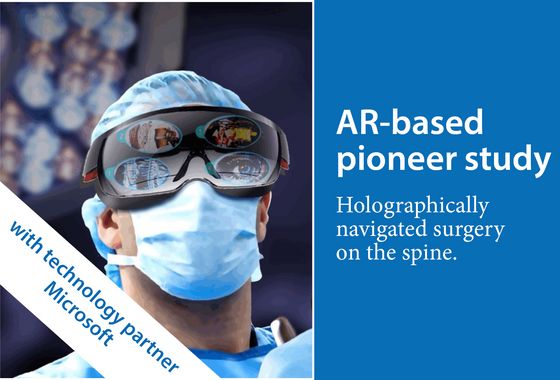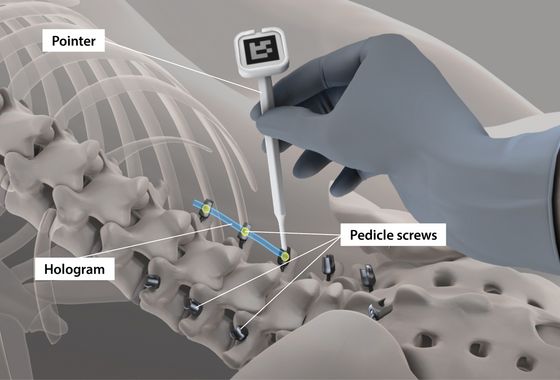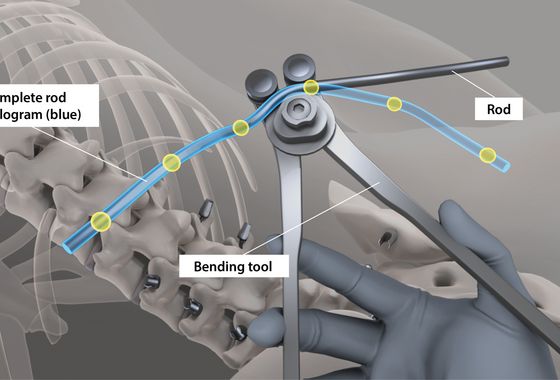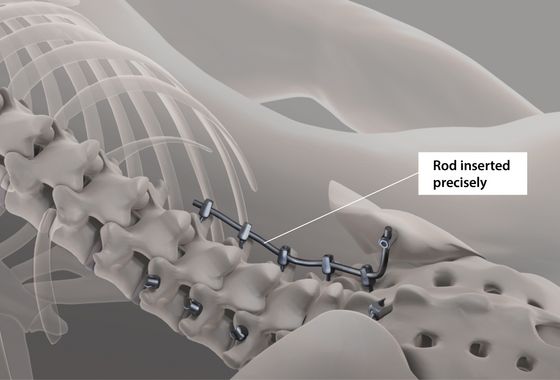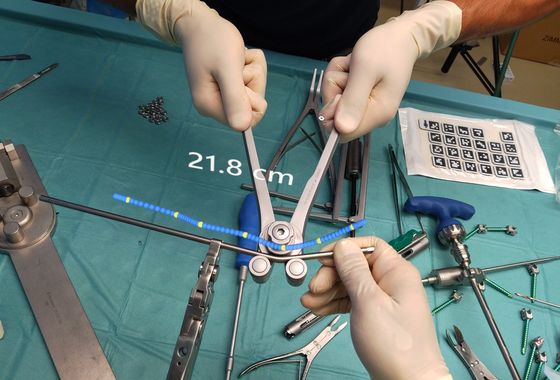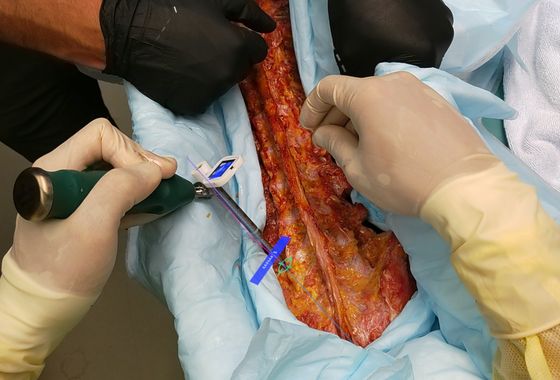At Balgrist University Hospital, for some years a team of experts from the fields of research, engineering and surgery have been looking at the possibility of augmented reality (AR) to assist with operations on the spine. Imaging data on AR glasses should soon make orthopedic operations more efficient, precise, and safer for the patient. Balgrist University Hospital is laying the foundations for this with the first clinical study of its type in the world.
“A prominent milestone on the way towards orthopedics shaped by computer technology, with the goal of allowing fully digitalized treatment”, says Prof. Philipp Fürnstahl, Head of ROCS at Balgrist.
The study, which was approved by Swissmedic, is being carried out as part of Zurich University Medicine’s SURGENT (Surgeon Enhancing Technologies) Flagship Project. Together with their technology partner, Microsoft, Balgrist ROCS (Research in Orthopedic Computer Science) and Incremed, a university start-up supported by Balgrist Beteiligungs AG, are currently testing AR-based surgical navigation in orthopedics. “In orthopedics, augmented reality is the key to creating new standards for carrying out precise patient-specific surgery. Thanks to the cooperation between the Zurich University, the University hospitals and the ETH, Zurich is at the cutting edge globally,” says Prof. Dr. med. Mazda Farshad, Head of the Flagship Project and Chief Medical Officer of Balgrist University Hospital.
An important step for AR technology in the operating roomIn the first study of its type to be carried out anywhere in the world, complex surgical operations on the spine will be performed with or without holographic navigation, following a randomization procedure. The results of the initial phase are expected to be available in autumn 2020. A comparison of the groups should provide the basis for an important step towards bringing AR technology from the research laboratory into operating theatres across the world. Prof. Philipp Fürnstahl, Head of ROCS at Balgrist, sees it as “a prominent milestone on the way towards orthopedics shaped by computer technology, with the goal of allowing fully digitalized treatment.” And Marianne Janik, CEO of Microsoft Switzerland, adds “Cooperation with Balgrist University Hospital shows that augmented reality and artificial intelligence can already support and even enhance human abilities and expertise. We are proud that our technology meets the very high quality requirements and that we can contribute to this pioneering work.”
Benefits for patients
3D images of the affected anatomy are generated on the basis of CT scans and displayed directly in the surgical field during the operation. Surgeons can see the patient’s 3D anatomy using AR glasses. The AR navigation software guides each step of the operation. For example, it shows the exact placement of a screw at the correct site and the appropriate angle, and verifies the accuracy. In addition to the precise positioning of implant components, rod implants can be measured and thus individually dimensioned. This allows an enhancement of the surgeon’s perceptive senses.
For further information, contact
Franziska Ingold, Heas of Communications
Balgrist University Hospital
+41 44 386 14 15
Email

